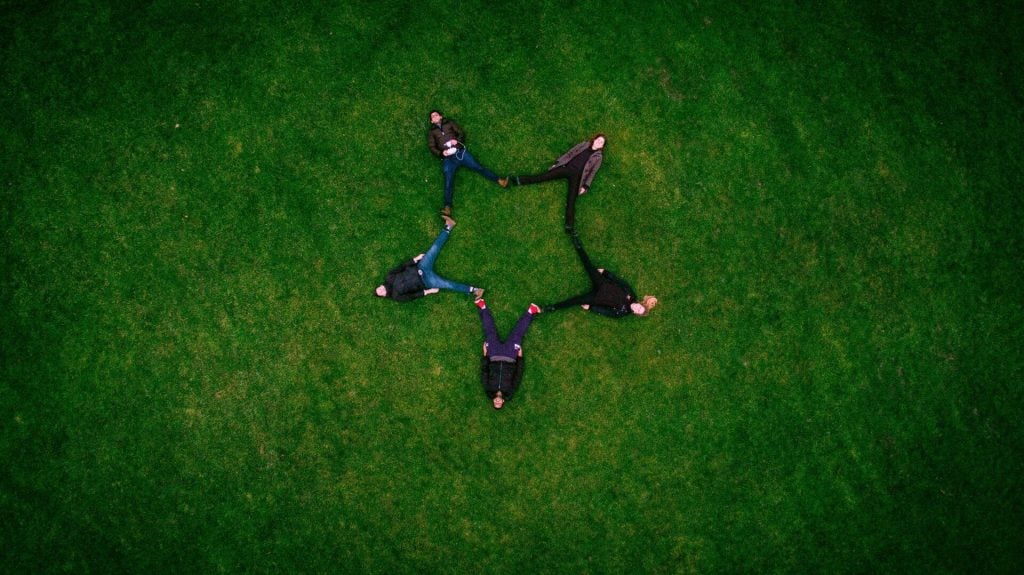
Welcome to the third installment in our 6-part series on psychedelic integration, sponsored by Mindleap, an official partner of Third Wave.
Psychedelic experiences can be beautiful, challenging, enlightening, and even confounding. Since no two journeys are alike, the art of psychedelic integration requires an intuitive mix of modalities that is unique to each individual and their journey. But with so many techniques to choose from, it can sometimes be tricky to know where to start.
Working with a trusted integration coach or therapist, in person or through platforms like Mindleap, can provide you with a safe container to explore various approaches that honor your experience. But to choose the right practitioner, or even integrate by yourself, it helps to first understand the different integration modalities.
Current integration frameworks: The Holistic Model and the ACER Model
A great way to begin learning about integration is to take inspiration from the leading practitioners in psychedelic therapy. Such frameworks can provide a helpful structure for your process, ensuring that the transformation you’re experiencing permeates all levels of your being.
Created by consciousness guide Françoise Bourzat, the Holistic Model for a Balanced Life divides life into five interdependent aspects: body, mind, spirit, community, and environment. Inspired by Françoise’s over 30 years of experience guiding psilocybin journeys with the Mazatecs in Mexico, the model is an invitation to look beyond individualistic healing and embrace our interconnectedness.
How can you do that? First, identify the type of journey you just had. If your journey called your attention to your spiritual life, start by finding practices that would support it. From there, explore how this insight can trickle down to the other areas of your life. How will it benefit your body and mind? How can it improve your relationship with others, and the environment?
The second psychedelic integration model comes from former clinical lead of the psilocybin for depression study at Imperial College, and clinical director at Synthesis Institute, Rosalind Watts.
Using the image of a tree as a metaphor, the Accept, Connect, Embody, Restore (ACER) Model involves four steps. It begins with acceptance, by going down to the roots to make peace with pain and darkness. From there, you seek connection by reaching towards a higher purpose, like the branches of a tree. In the middle lies the trunk, where the pain from the roots can alchemize to help you grow towards the light. And then, it’s time for restoration: cultivating your relationship to the environment through the practice of ecopsychology.
While these models don’t prescribe any particular practices, they teach us an essential aspect of integration: the process isn’t about integrating solitary insights in our minds, but integrating the human, inside and out. With this in mind, choosing the right modalities for your integration becomes an easier task and a much more meaningful pursuit.
Psychedelic integration therapy or coaching
If you’re struggling to make sense of your journey, talking to an integration specialist is an excellent place to start. Psychedelic integration therapy usually follows a non-directive talking approach that can help you understand your journey and dig deeper into psychological issues from your past. On the other hand, psychedelic integration coaching can be more directive. Coaches can help you understand your experience and support your transformation by designing an integration plan and holding you accountable.

Breathwork
Working with the breath is a great tool for grounding and relaxation, and practices like pranayama or the Wim Hof Method can be helpful in learning how to become more embodied.
At the same time, deeper and more intense practices like Holotropic Breathwork or Transformational Breath induce altered states of consciousness. Practicing these can support integration by releasing emotional and energetic material that didn’t get fully processed during the psychedelic experience.
Curious about exciting opportunities as a psychedelic practitioner?
Curious about exciting opportunities as a psychedelic
practitioner?
practitioner?
Our FREE E-Book, "Top 3 Emerging Psychedelic Careers," offers a guide to navigating the psychedelic industry.
Plus, you'll receive an exclusive webinar where you can dive deeper and explore these potential career paths.
Somatic and embodiment approaches
Psychedelic experiences can connect us to places in our bodies where we hold tension, pain, or even numbness. In this case, somatic practices can help you reconnect to your body and even process trauma.
If you’re looking to become more embodied, practices like yoga, Qigong, Tai Chi, 5Rhythms, or dancing can help you get in touch with sensations and the subtle body. You can also explore various bodywork techniques like Reiki, massage, acupuncture, craniosacral therapy, or rolfing.
Trauma therapy
When a psychedelic journey reveals traumatic memories stored in your body, it’s important to find practitioners who specialize in this work. Approaches like Somatic Experiencing and EMDR have shown great success in helping trauma survivors navigate the territory skillfully while avoiding retraumatization.
Other popular techniques like the Hakomi Method or Sensorimotor Psychotherapy include a similar mix of psychotherapy and somatic practices. Cognitive therapies like neuro-linguistic programming (NLP) or cognitive behavioral therapy (CBT) can support the management of traumatic symptoms, while trauma release exercises (TRE) can help the body release stress without processing the trauma verbally.
And if you’re a fan of acupuncture, the emotional freedom technique (EFT) is a tapping practice that works with the body’s energy system without engaging traumatic memories.
Mindfulness and meditation
Meditation is one of the most popular ways to integrate a psychedelic experience, and has been proven to support the lasting benefits of psychedelic therapy. It is also one of the most accessible integration practices. The majority of integration specialists today are trained in some form of mindfulness, plus the myriad apps available make it easy to establish a home practice.
However, if you feel like your sittings are dysregulating or triggering traumatic symptoms, that’s a sign you should seek a specialist. Trauma-sensitive mindfulness practitioners can help you establish safety in your practice and navigate the symptoms without the risk of retraumatization.

Self-expression
Whether you’re trying to make sense of your journey or tap into your creative potential following a psychedelic experience, self-expression practices like journaling can help materialize your insights.
Writing about your experience can help you process it better. It can also give you something to come back to as your integration process evolves. However, if your experience is hard to put into words, drawing, painting, writing a song, dancing, or creating any other form of art can help you get out of your head and process the experience differently.
Finding community
As we’ve seen, a necessary part of integration is realizing our shared humanity. Finding community can mean anything from improving your relationships at home or at work, joining a psychedelic society or circle, or finding a group of people who share a hobby.
Integration can also be a great time to examine how you show up in the world and explore the principle of reciprocity. How can you give back to the indigenous cultures who gave us our rituals? Can you do anything to support the psychedelic movement?
Listen to our podcast episode with Amanda Eilian talking about: In Search of Community and Meaning or Click here to read the transcript
Environment practices
As the threats of environmental decline grow, it’s more important than ever to engage in practices that preserve and restore the natural world. With a growing body of evidence supporting the healing benefits of being in nature, improving our connection to nature is essential to the process of integration and our long-term wellbeing.
Spending time in nature, observing the rhythms of the seasons, adopting an ethical diet, and bringing nature inside your home are great ways to start.
Remember, integration is an intuitive process
You can’t control the unfolding of your journeys, but how you relate to them is entirely up to you. Seek activities that feel good and have a positive impact on your life and relationships. Check in with yourself and see how you respond to each modality.
After all, integration is all about getting to know yourself and honoring your full being, as you are.







